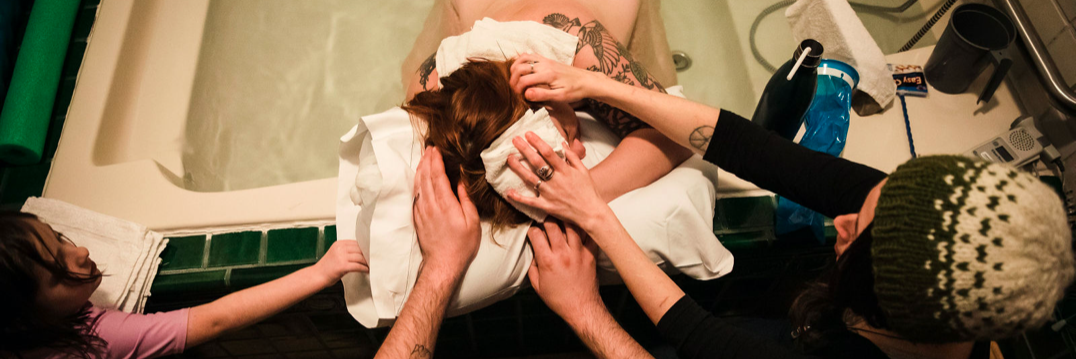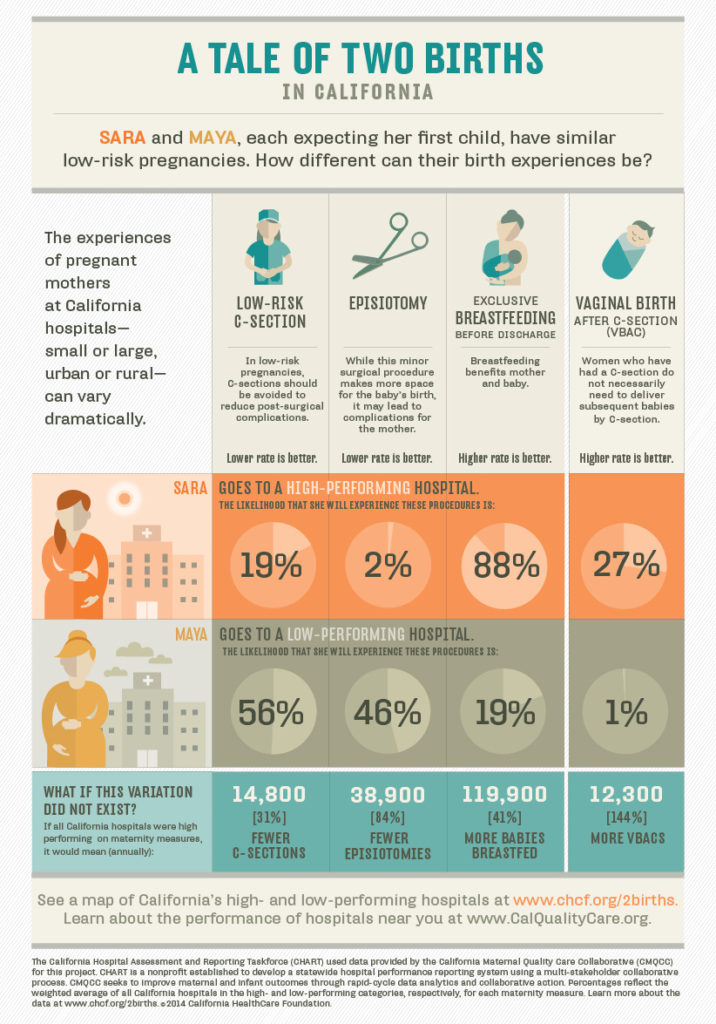Cesarean Birth and VBAC
VBAC Facts is an evidence-based resource for information about the safety, options and factors involved in having a vaginal birth after a cesarean.
Julie Brill at Well Pregnancy teaches a class specifically for parents who are having a planned cesarean birth. It is based on Peggy Huddleston’s program, “Prepare for Surgery, Heal Faster.” It is free for folks who are going to Emerson Hospital.
ICAN is the International Cesarean Awareness Network. ICAN is a nonprofit organization whose mission is to improve maternal-child health by preventing unnecessary cesarians through education, providing support for cesarean recovery, and promoting Vaginal Birth After Cesarean (VBAC). There is also a Boston chapter that has meetings in Arlington, MA.
Cesarean Rates is a resource for the most up-to-date statistics of cesarean sections at hospitals around the United States. Here are the Massachusetts statistics.
Hospital Choice Matters, A California Infographic
While this infographic is California specific, it goes to show how an individual person, having a low-risk pregnancy with a first baby, is likely to have a very different birthing experience depending on the norms of the hospital/practice they choose. I know people are limited by location, insurance coverage, and other needs, but doing some research into the intervention rates at local hospitals can make a big difference in setting expectations. So can working with a local doula who knows what the norms of various local birth sites are!
I recently finished Jen Kamel’s class The Truth About VBAC and learned, among other things, how hard it can be for an individual provider to calculate their own rates of cesarean section. While an individual may have a low rate of intervention, those rates may double during the weekends when that particular provider is non on-call. Ideally, any consumer of OB/Midwifery care should get to know the rates of intervention between every provider in a practice they choose.


